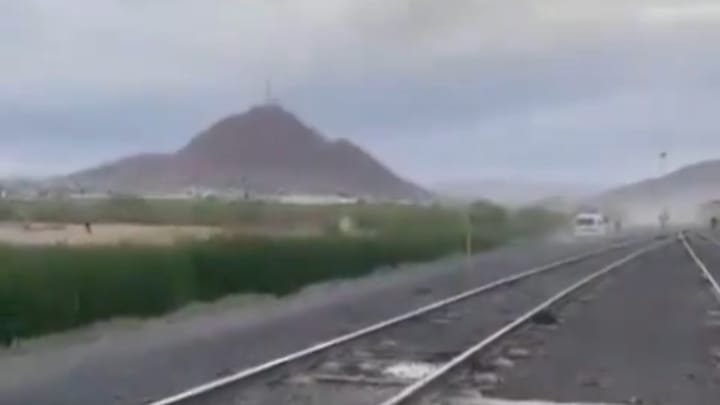A Road Trip to the Deep South

During Spring Break, I accompanied my younger son, a university student, to Louisiana and Mississippi. The trip was his idea and he planned it.
A road trip is an opportunity to see our country at ground level. You drive through part of the U.S.A, you see landscapes, cities, historical sites and even talk to people. You can appreciate our American heritage.
We crossed the Mississippi River, so important in our nation’s history, at several locations on the trip.

We went to Mississippi’s capital of Jackson and Louisiana’s capital of Baton Rouge, and to the capitol building of each state.
The Mississippi state capitol’s design is basically the same as that of the U.S. Capitol in Washington, D.C. We actually watched a short session of the Mississippi House of Representatives.
While there, we met a visitor from Poland, who had been told (correctly) that Jackson is a dangerous city. On a road trip, you see, we also reflect on our nation’s problems.
The Louisiana state capitol in Baton Rouge is a skyscraper, the tallest capitol in the nation – Huey Long made sure of that. He was actually assassinated in the capitol in 1935.

Our stop at a convenience store in Florence, Mississippi, coincided with an accident in the street. A lady in a car crashed into a motorcycle.
I was impressed at how quickly people sprang into action to help and it appeared the motorcyclist was not seriously injured.
We visited the Gulf Coast of Mississippi. I read on the internet that a Navy base there put up a wall of shipping containers to protect the base from local gunfire.
As reported in a recent article, New Orleans has the second-highest homicide rate in the U.S. and the 22nd-highest in the world.
While there, we saw a burned-out vehicle sitting on the side of the street. What was the story behind that?
Like other big U.S. cities, New Orleans has homeless people. Tell me again why we need to bring in millions of illegal aliens.
We departed New Orleans to the north, crossing Lake Pontchartrain on its nearly 24-mile-long causeway, the longest continuous bridge over water in the world.
Part of American history is the Civil War (1861-1865) and you can’t ignore it in the South.
In recent years, there’s been a fanatical attempt to remove every Confederate monument in the country.
But Confederate history is part of American history. I had relatives on both sides of the Civil War.
We visited the Vicksburg battlefield in Mississippi and it’s quite impressive.
The battle of Vicksburg was fought in 1863. After two Union attacks, the city was besieged by General Grant’s Union Army for over 40 days. The Confederates surrendered on July 4, 1863, a day after Lee’s defeat at Gettysburg, Pennsylvania.
Nowadays you can peacefully drive through the battlefield where over 100,000 American men fought, and where some died.
It’s clearly marked out so you can see where the battle lines were. Sometimes the opposing sides were quite close to each other.
The Vicksburg battlefield has 1,325 monuments and markers honoring the men on both sides of the battle.

The Illinois monument towers above the battlefield. You walk up the 47 steps (one for each day of the siege), enter the dome, and see the names of the Illinois soldiers who fought at Vicksburg.

The Missouri State Memorial honors Missourians who fought on both sides. The site of the memorial is where a Missouri Union regiment fought against a Confederate Union regiment.
Fellow Missourians fighting and killing each other. It’s sobering.
The inscription on the Missouri Memorial honors the soldiers on both sides:
“To commemorate and perpetuate the heroic services, the unselfish devotion to duty and the exalted patriotism of the Missouri soldiers, Union and Confederate, who were engaged in the campaign, siege and defense of Vicksburg.”

Reflecting on Vicksburg and other historic battlefields, we can honor the Americans who fought and gave their lives; hoping nothing like this happens in our country again.
And we can and should resolve to work to protect our country from the threats it faces today in 2024.
You can find more of Allan Wall's work at his website and Mexico News Report.
Border Hawk Needs Your Help - to Stop the Invasion!
Please donate to support our work
Visit BorderHawk.news




